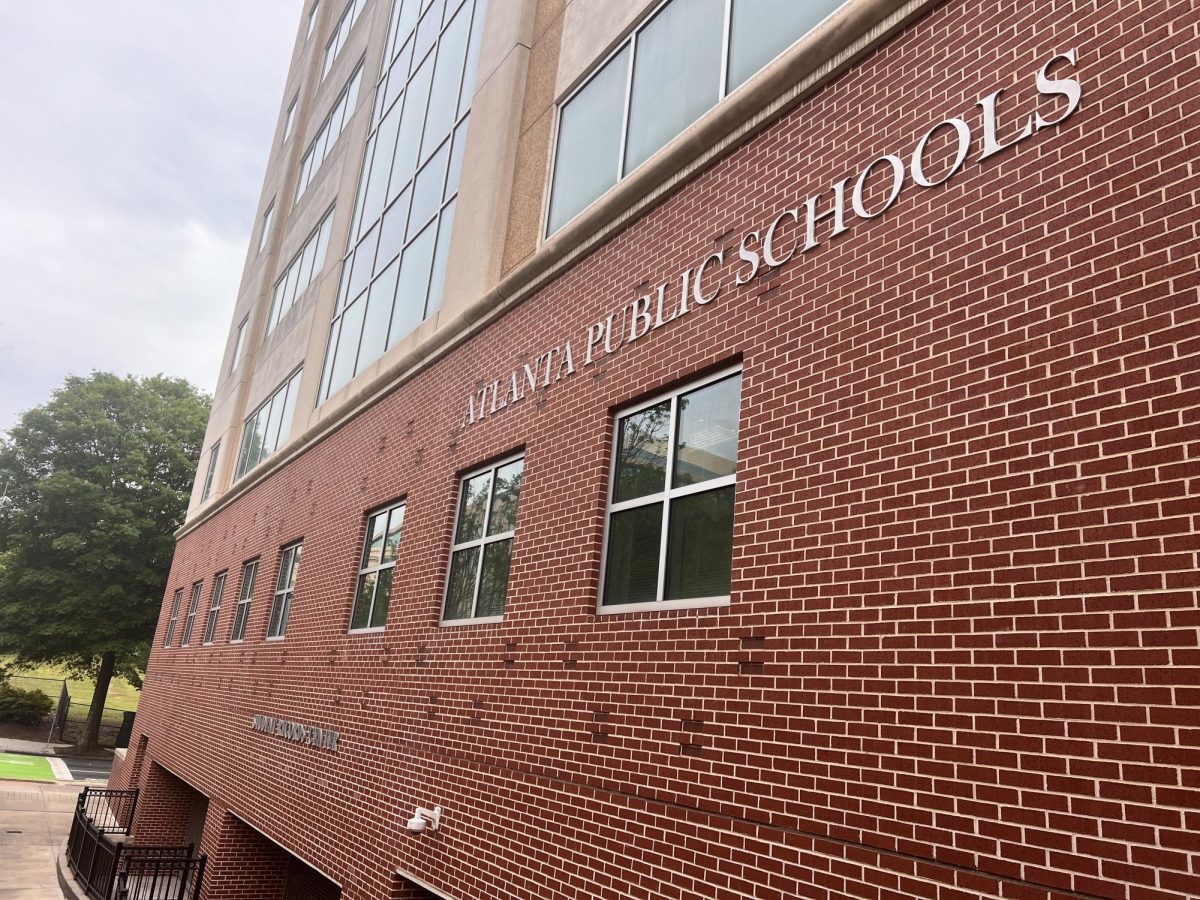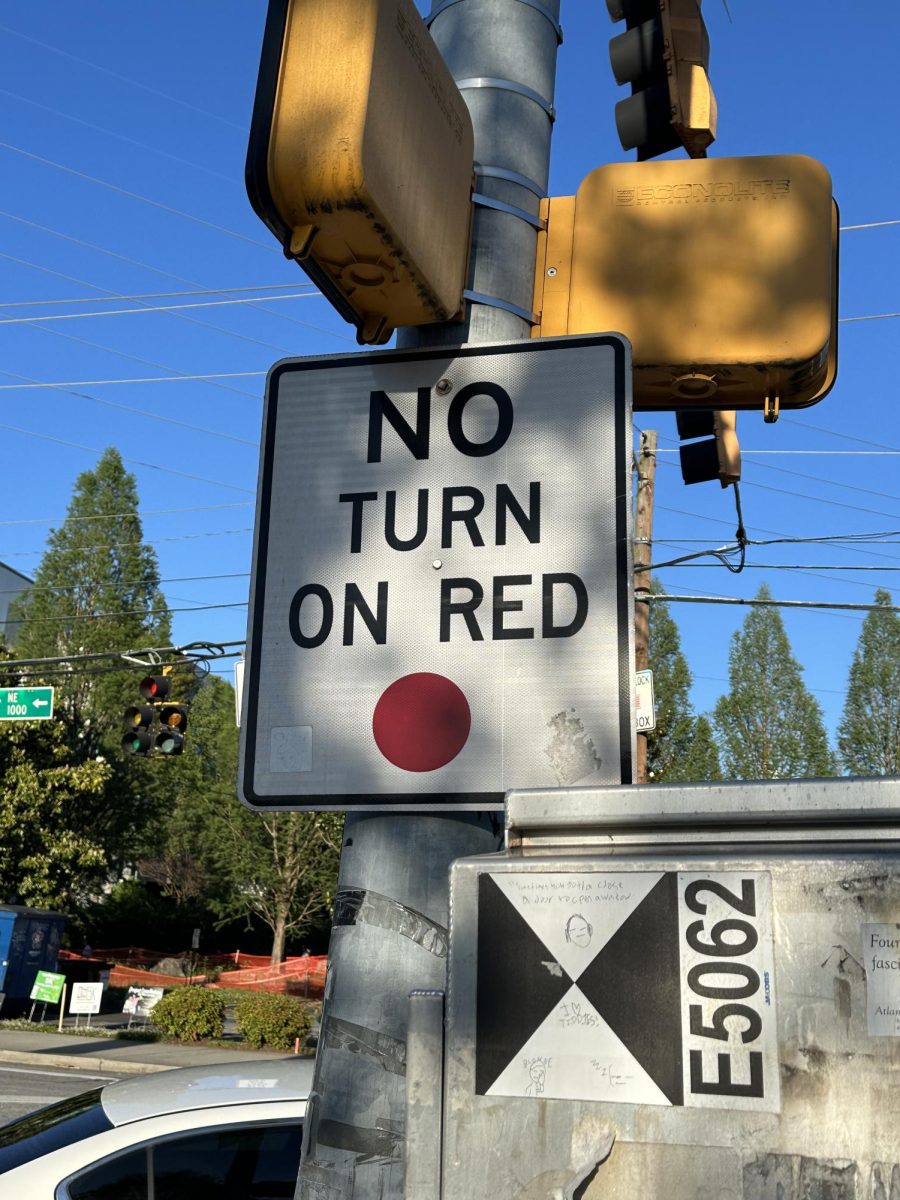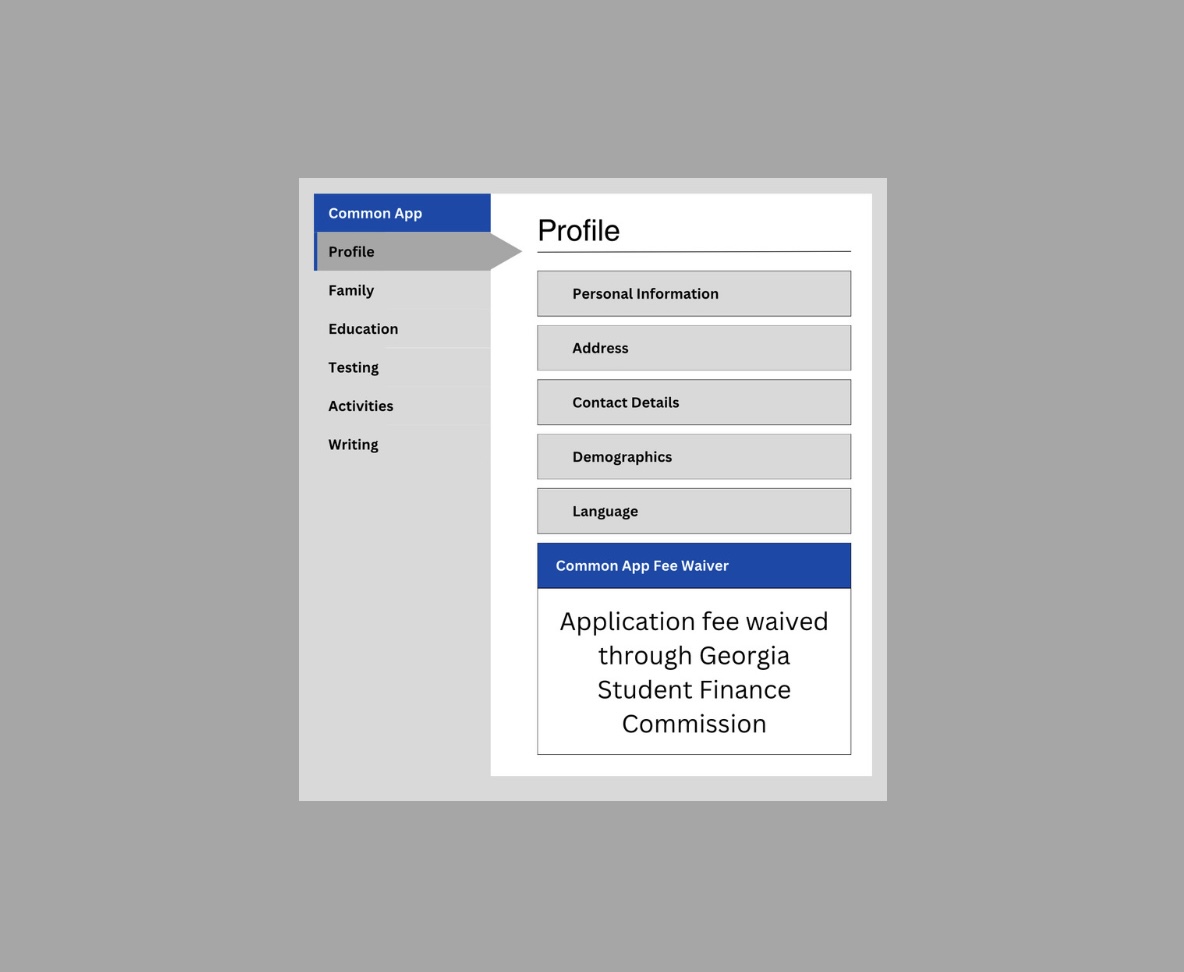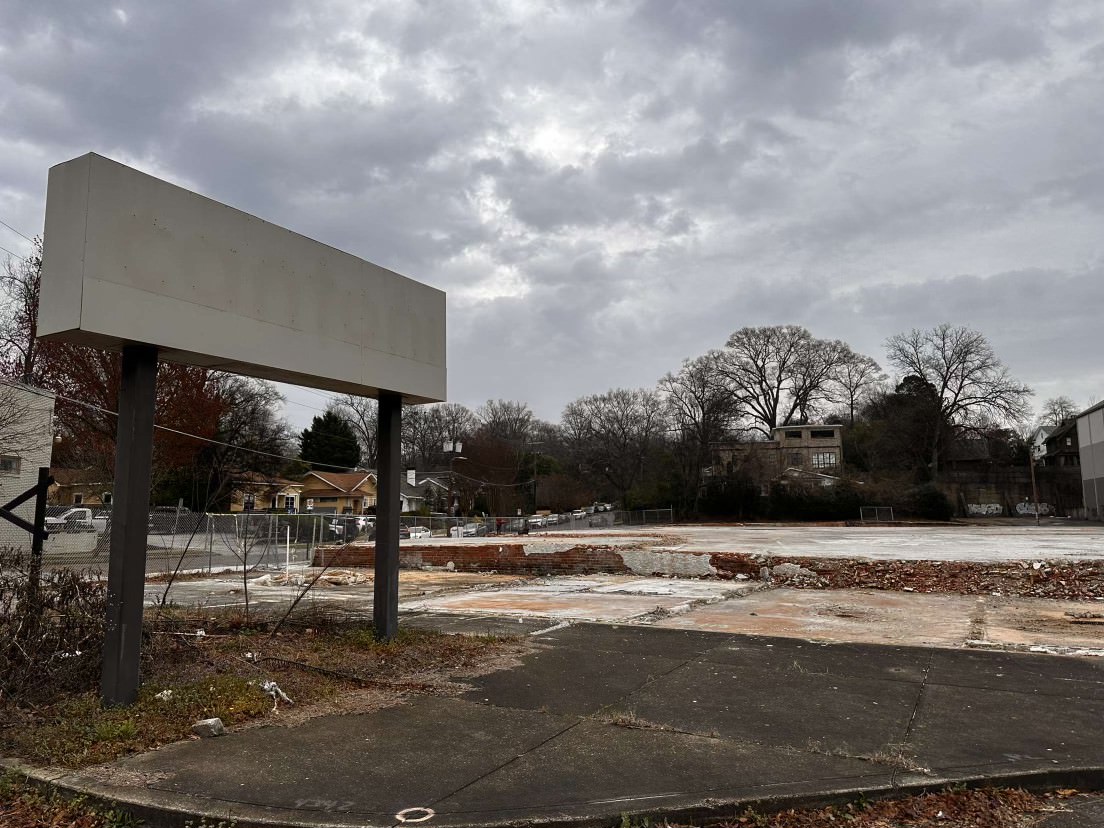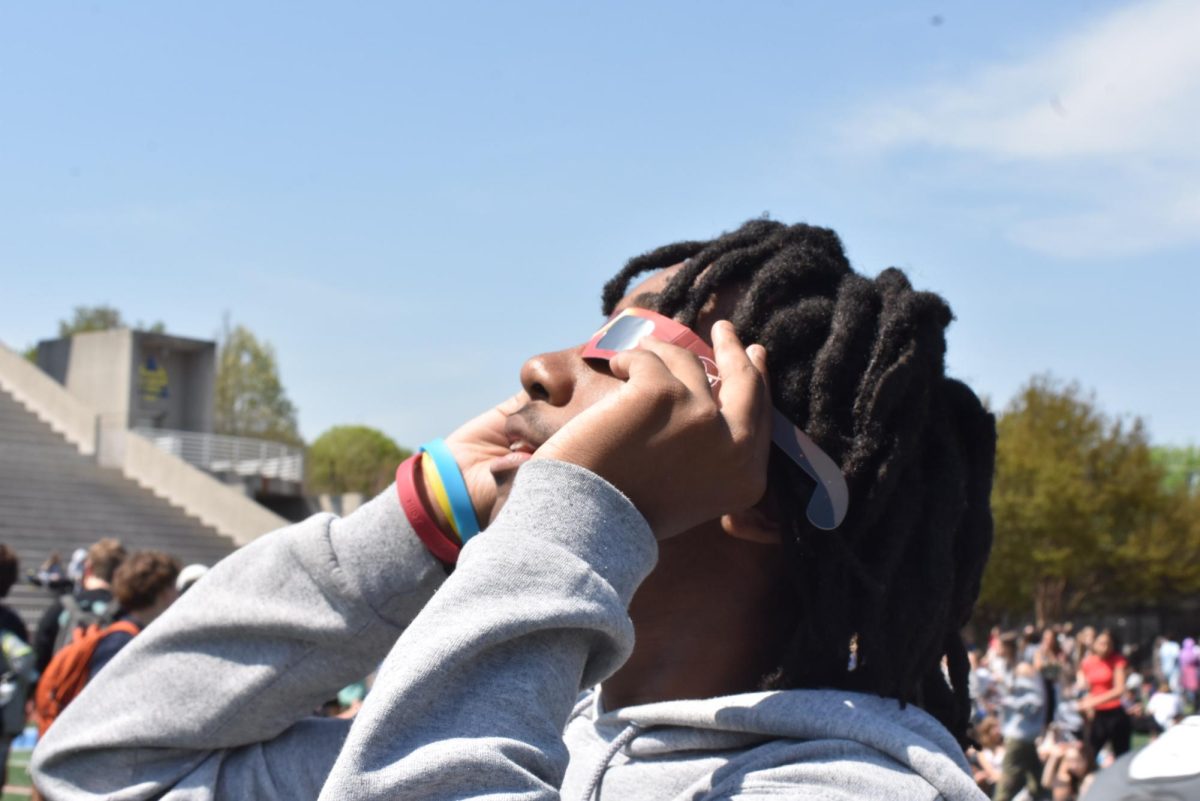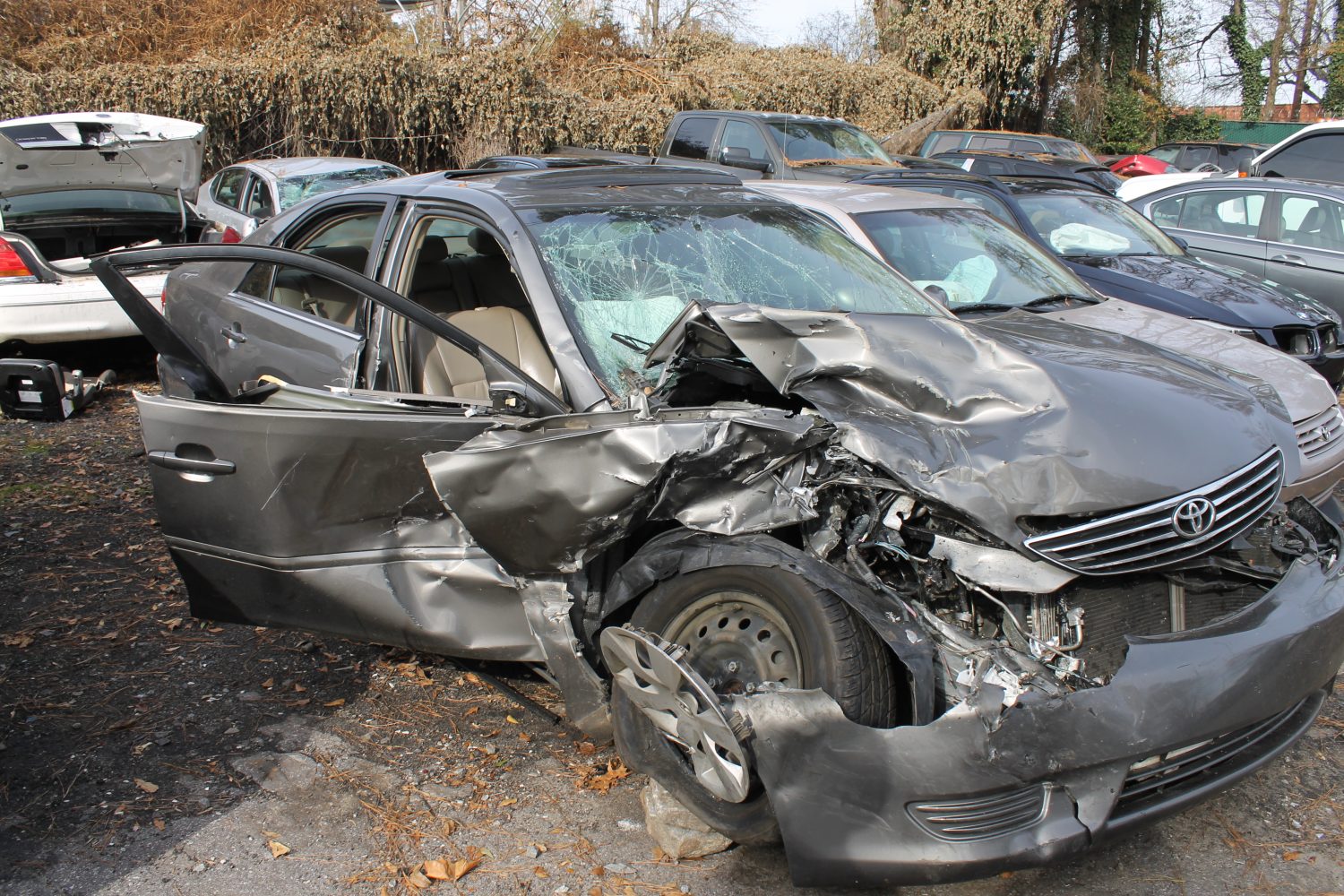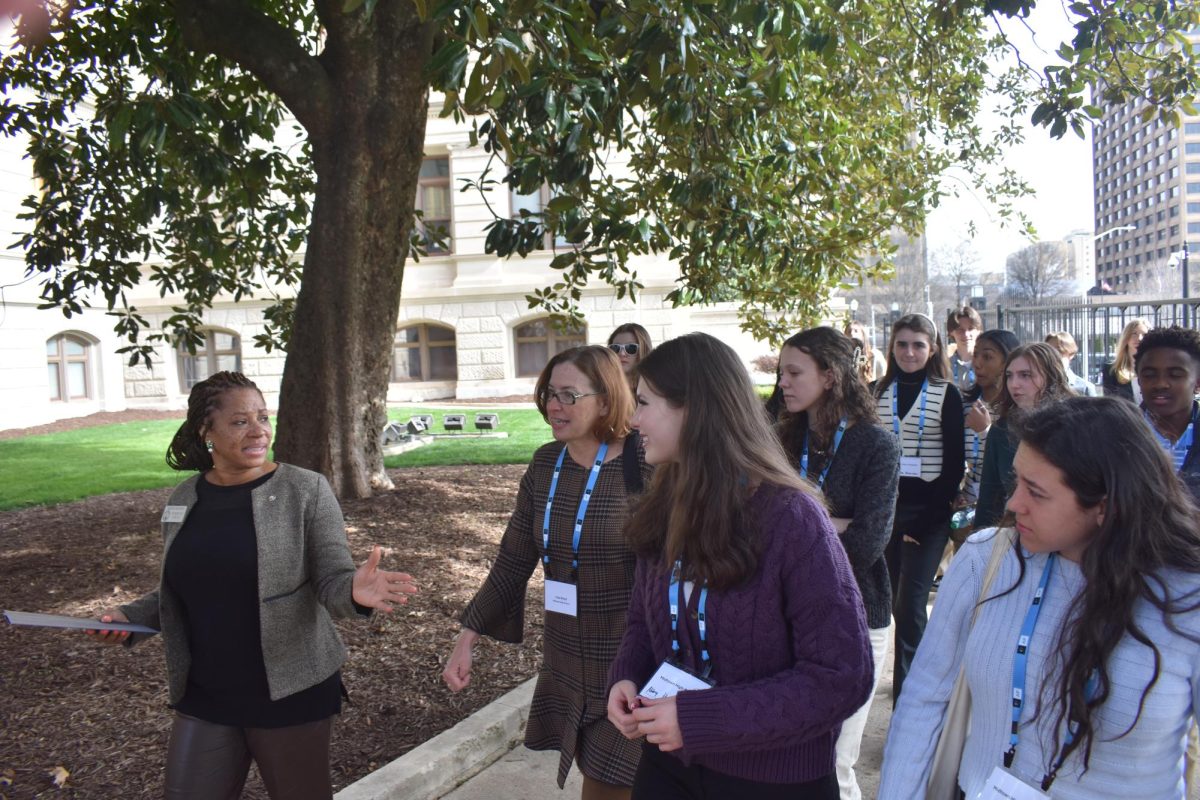[slideshow_deploy id=’9117′]
Driving means freedom, independence–something that teens have been anticipating for–for what seems like forever. Always being taken or picked up, catching a bus or train, traveling on foot or depending on the kindness of parents or friends for a ride can be such a hassle.
The time has finally come, the paperwork is complete and a driver’s license is in hand. The promised land of vehicle independence can be more hell than heaven. At least three Grady drivers learned the hard way that the freedom to drive can come with a high cost–a car accident that can lead to costly repairs, painful injuries and (thankfully not in these three cases) death.
Junior Penelope Realff said she was nervous when she first got behind the wheel in Midtown Atlanta. Although she practiced driving with her parents and took the required DDS class, she was more nervous about other drivers and their mistakes than her own.
“That is my No. 1 fear,” Realff said, “that someone would blow through a stop sign when I was going through.”
Her worst fears were realized when Realff turned left from a shopping complex parking lot and onto a highway, only to have a black sedan with its lights off crash into her while driving way over the legal speed limit.
After getting out of the car, the other driver checked on Realff to make sure she wasn’t seriously hurt and then got back into his car and fled the scene. Realff was brought to the hospital with concussion and a few pulled muscles in her hand and back.
“I didn’t realize what was happening, and I was confused,” Realff said. “I had heard of hit and runs, but I never thought it would happen to me.”
Car accidents happen more often to teen drivers than to older drivers with whom they share the road. According to the Insurance Institute for Highway Safety, teen drivers have crash rates three times higher than those of drivers 20 years and older.
Novice drivers not only suffer from lack of driving experience, but also from other native vulnerabilities characteristic of younger people–a tendency lose focus and be distracted by friends, phones, music or just the events of the day.
Even more troubling for Grady drivers, urban drivers are far more likely to be in a car accident than are their rural counterparts. Statistics show that urban areas have much higher accident frequency rates than rural areas do.
According to the planning and policy development specialist Kelly Carlson of the Georgia Governor’s Office of Highway Safety, Fulton County has more drivers than any other county, and as a result, there are going to be more young adults involved in crashes than counties that have fewer drivers on the road. Despite this numbers game, however, the number of young Fulton County drivers (15-20 years old) involved in fatal crashes has decreased significantly from the peak statistical year of 2007. In 2011, the most recent year for which the Governor’s Office of Highway Safety has compiled statistics, the number of younger drivers involved in fatal crashes decreased 42 percent from the number involved in 2007.
The accidents are less frequent and they are also less likely to be fatal.
“The metro Atlanta area has a higher number of accidents, but the accidents that take place in the rural areas of the state have more fatalities,” Carlson said. “This is because metro areas are closer to level one trauma centers such as Grady Hospital.”
According to the Encyclopedia of State Traffic Information rural drivers in 2011 suffered a fatality rate of 1.7 fatalities for every 100 million miles driven. This fatality rate is over twice the amount of the rate .77 fatalities reported in urban areas in 2011.
For juniors Kitty Wright and Hannah Martin, the proximity to a trauma center is no boring statistic. On the morning of Sept. 18, just before school, Wright was running late to pick up Martin for school and when she turned onto Edgewood. She saw another car coming down the road.
“I turned left at what I thought was a four-way stop thinking she was going to see me and stop, but she doesn’t stop and just keeps going right into me,” Wright said.
Looking back on the accident Wright remembers it seemed like a dream.
“I tried to get out of the car on my side, but I couldn’t because the other car made a dent a foot deep into my car,” Wright said. “I even tried going through the window because I completely shattered it with my head, so it was gone. Totally gone.”
Luckily for Wright, her accident took place down the street from the Atlanta Medical Center, a level-one trauma center. Wright was treated for pain on her left side, bruising along her chest from the seat belt, and a deep cut on her head from shattering the window.
When a vehicle is severely damaged in an auto accident, it is either driven home or to an insurance adjuster by its owner, or, if it is not drivable, like Wright’s Jeep Liberty it is towed to an impound lot.
The City of Atlanta has 10 impound lots where different wrecker companies all over the city tow cars after accidents. Futo’s Wrecker on Liddell Drive covers Zone 2 from near Grady to Sandy Springs and includes parts of I-75, I-85 and Georgia 400.
The Futo lot receives an average of 30 cars a day. Jarada Henderson, a driver for Futo’s, said that in the 20 years he has worked as a wrecker driver, he has seen everything when it comes to car and truck accidents.
“Pay attention to your surroundings,” Henderson says to young drivers. “It is not just yourself. You can be doing the right thing and going through a green light but you better be checking left and right when you are going through your green light. You know people are texting; you got people in a daze; you got people looking for stuff in the car.”
Henderson doesn’t have to say that to novice driver, junior Jenni Rogan for her to believe it. Rogan was going to pick up a friend after school and got into an accident while turning left. Rogan said she felt she had time enough to turn, but she didn’t make it across.
“I thought, ‘Oh I’m going to make it around this curve,’ and then after the accident I didn’t know what to do,” Rogan said. “I was 16 years old. Do I call my parents? Do I call the police? What do I do? I think I just started crying. I called my dad. He said to remain calm, so I just waited there.”
Rogan’s reaction was correct. Atlanta Deputy Chief of Police Joseph Spillane said it is very important to remain at the scene of an accident. Spillane said although there may be a lot of confusion, new drivers should follow five important steps in an accident: find a safe place, call the police, don’t talk to the other driver and admit fault, exchange information with the other driver which is required by law and move the car out of the roadway if possible.
Spillane said it is no coincidence that all three Grady drivers’ accidents were caused by turning left.
“Failing to yield while turning left is usually the fault of the driver turning left,” Spillane said. “It is not just a high rate of novice drivers but of all drivers.” He explained that intown roads are narrower than suburban roads and there are more things going on around you, more traffic and more distractions.
Turning left safely in the big city is a matter of focus, caution and discretion, the very principles that teen drivers need to master in order to drive safely.
Rogan shared a piece of advice she would give as a result of the accident.
“Be aware of what’s around you,” she said. “Don’t be talking to friends or on your phone. Actually look at the cars around you. Notice when something’s off or when the driving situation has changed. You have to be really careful when you are driving because accidents happen all the time–especially when you least expect it.”

